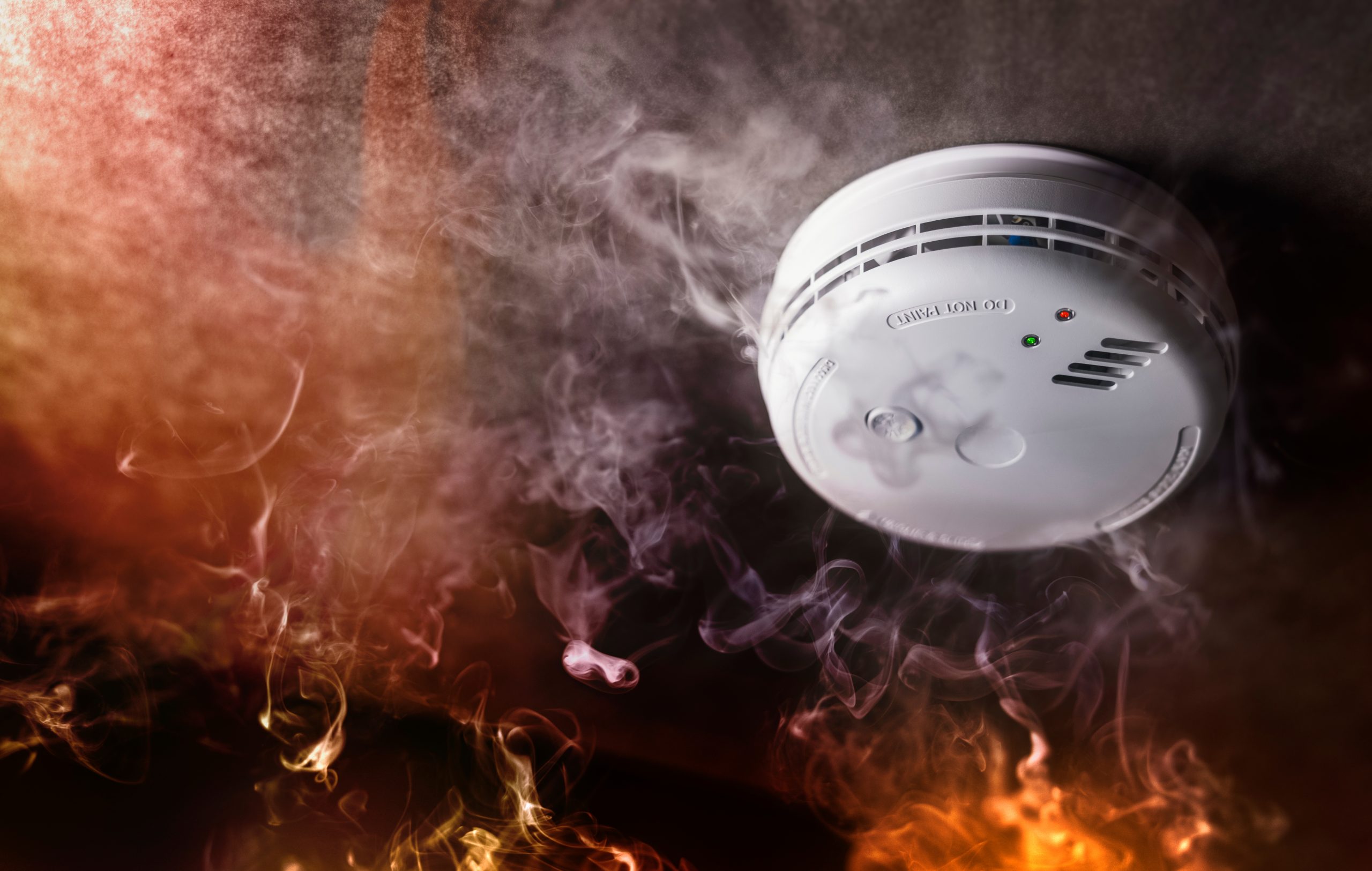Where and why are Carbon Monoxide Detectors required to be installed?
 Consolidated Fire protection is a national company that performs the inspection, testing, and maintenance for all fire protection needs and performs installations of Fire Alarm and Sprinkler Systems.
Consolidated Fire protection is a national company that performs the inspection, testing, and maintenance for all fire protection needs and performs installations of Fire Alarm and Sprinkler Systems.
Best Practice for the Installation, Testing, Maintenance, and Service / Repair of Carbon Monoxide Detection (CO Detection).
Challenge:
Depending on the building’s classification and criteria needs, there are options a designer or installer could take to meet the installation requirements. There are 120 VAC-powered devices, battery-powered devices, and 12/24 VDC / VAC-powered devices supervised by the building’s fire alarm system or a CO detection system.
The driving documents for CO detection requirements are International Building Code, International Fire Code, NFPA 101, and NFPA 1 for example.
NFPA 101 guides us to review NFPA 720 for the installation and maintenance of the CO detection devices and systems.
In 2018, NFPA stopped publishing NFPA 720 – Standard for the installation of Carbon Monoxide Detection and Warning Equipment and placed the requirements for installation, testing, and maintenance in NFPA 72.
Why are Carbon Monoxide Detectors required?
As stated by the CDC:
CO is found in fumes produced any time you burn fuel in cars or trucks, small engines, stoves, lanterns, grills, fireplaces, gas ranges, or furnaces. CO can build up indoors and poison people and animals who breathe it.
Everyone is at risk for CO poisoning. Infants, the elderly, and people with chronic heart disease, anemia, or breathing problems are more likely to get sick from CO.
Carbon monoxide poisoning is the second most common cause of non-medicinal poisonings death. According to the CDC, over 10,000 are poisoned by carbon monoxide needing medical treatment each year and more than 438 people in the U.S. die annually from carbon monoxide poisoning.
Where are Carbon Monoxide Detectors required to be installed?
The following information was obtained from NCLS, The National Conference of State Legislature:
There are 27 states and the District of Columbia that require carbon monoxide detectors in private dwellings. The states listed are Alaska, California, Colorado, Connecticut, District of Columbia, Florida, Georgia (via the adoption of the International Residential Code), Illinois, Iowa, Maine, Maryland, Massachusetts, Michigan, Minnesota, Nebraska, New Hampshire, New Jersey, New York, North Carolina, Oregon, Pennsylvania, Rhode Island, Tennessee, Utah, Vermont, Washington, West Virginia, and Wisconsin.
Another 11 states require carbon monoxide detectors in private dwellings regulatory through the adoption of the International Residential Code or via an amendment to their state’s building code: Alabama, Georgia, Idaho, Kentucky, Louisiana, New Mexico, North Dakota, Oklahoma, South Carolina, Virginia, and Wyoming. California, Connecticut, Illinois, Maine, and Maryland require carbon monoxide (CO) detectors in school buildings.
Fourteen states require the installation of carbon monoxide detectors in hotels and motels under the statute. Three of those states (New Jersey, Vermont, and Wisconsin) have complementary administrative regulations. Two states (Kansas and Washington) have requirements through administrative regulations alone.
Certain states limit the installation of CO detection in buildings with fossil-fuel burning devices; others only require a CO device to be installed upon the sale of the property or unit.
In all states that require CO alarms or detectors, the code tells us when they are required and where they are required, and the standard (NFPA 72) tells how to install, test, and maintain the CO alarms or detectors
Best Practices implemented:
To know when you are required to install and maintain CO detection, it is always good to discuss with a Professional Engineer (PE), qualified designer, or your local Fire Authority.
NFPA 72 National Fire Alarm and Signaling Code have installation methods for CO Detection when installed as standalone devices, connected to a building’s fire alarm system, or as part of a CO detection system.
NFPA 72 also has the requirements for inspection, testing, and maintenance of CO detectors and CO detection systems in Chapter 14.
In today’s world, most buildings have some sort of fire alarm system or dedicated system installed within the premise connecting CO devices. The installed system allows supervision of the devices and can be set up to report to a monitoring center for notification, upon activation.
Results of Best Practice:
Having CO detection or a monitored CO detection system will help keep the occupants of the building safe from CO poisoning.
If you have a supervised monitored CO system, it might help save you, as the owner of the building money with your insurance.
Verification of Efficiency and/or Savings Captured:
Performing testing and maintenance of the CO alarm, detector or system can be accomplished at the same time as the testing of the fire alarm system and this will reduce the testing activity within your building.
Supervised CO detection devices, alarms, or systems ensure that the CO alarm or detector will be ready when needed.
Monitored CO devices, alarms, or systems will ensure that upon activation of the device a signal will be transmitted to a dispatch center so emergency services can be alerted and dispatched to the site.
